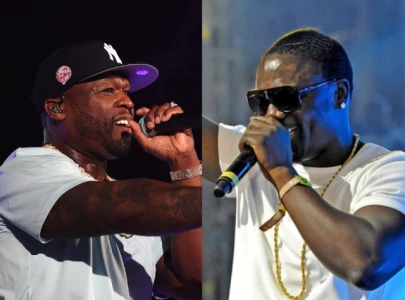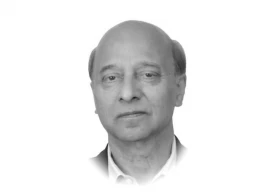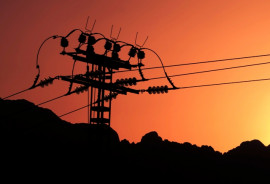
A few things are given about Modi 3.0. India shall be a patently Hindu, non-secular country in the near-term under Modi contrary to how it was perceived by its forefathers. It is not the division of the sub-continent that triggered an aggressive Hindu riposte to India’s multiethnicity but its inherent cultural insularity which shunned secularity and inclusiveness. It was only the pacifism of Gandhi and the liberalism of Nehru that enabled a secular constitution and a visible façade that founded the modern Indian state. Gandhi was killed soon after by a deranged Hindu, allegedly an RSS cadre, while Nehru stayed long enough to ensure that the extremist Hindu agenda of the RSS was kept in check continually to form a secular tradition which gave India its democratic and liberal credentials.
India benefited from its secular and democratic mien when international sensitivity to democracy turned acute in the aftermath of the Second World War. It was an early favourite of the USA which had inherited the leadership of the western, democratic world from Britain and remained a preferred outpost to the British for long after. To correct the impression of taking sides in bloc politics of the 1960s Nehru became a part of the non-align movement in his legacy years. It was still big enough not to be dispensed away in attention and tended to benefit both materially and militarily from both sides in the larger tussle of a bipolar global order. Most of the Indian industry gained its roots from those times. Nehru’s libertarian economics tied it to a socialist agenda even if liberal democracy defined society.
All this has changed in the Narendra Modi years. Sardar Patel, an iconic Indian leader in the independence years, was overtly biased towards an overwhelming Hindu definition of the state but was rightly neutralised by others in the Indian National Congress who preferred secularity and inclusivity. The demise of the INC over the years and the rise of the BJP have resurrected Sardar Patel in a different light enabling the BJP — a later political entity — to claim inheritance to an exclusive Hindu society. This has given rise to a regressive expression in Indian state and society’s existential construct. Most minorities barely survive and are cast to the fringe while Hinduism stands inalterably weaponised. Where and how will it settle is still open to question given the significant size of the minorities — almost twenty-five per cent of the Indian population — especially in the light of a recovering liberal trend exhibited in the 2024 election.
Modi used three planks to enforce his and his party’s ethnoreligious agenda — converting Muslim symbols like Babri mosque in Ayodhya into Hindu temples in fulfillment of his promise to nationalist Hindus; the introduction of the Uniform Civil Code which sought to replace religion-specific family laws into a common civil code in violation of respective religious preferences; and introduction of the National Register of Citizens targeted at Muslims to record their antecedence before 1972. Given the status of fragmentary record keeping in rural settings, lack of literacy and access to legal remedies in regions with history of trans-migrations because of conflict meant that those unable to prove residence in India before 1972 were either externed or waiting to be expelled. By any definition these were regressive measures targeted initially against Muslims in north-east India where if successfully accomplished would only proceed to be exercised in rest of India. Such demographic terror would only deliver a fully subjugated and repressed Muslim minority of over 250 million.
Cumulatively, these actions amounted to closing space on the minorities especially the Muslims imposing what has been called demographic terrorism. India in the meanwhile turns characteristically Hindu. If this marries trends seen across societies in Europe and the West, it entails a phenomenon that will reinforce exclusivity and identity with little likelihood that it can be reversed early or as easily. How will India emerge as a nation and a society from the tumult that it has cast into with around thirty per cent of its population targeted remains an enigma with the making of massive population instability across the region.
Many analysts tend to gloss over the institution of this sociocultural and ethnoreligious reality under the exuberance of seeing a resurging and historically liberal-leaning politics but may be surprised how another round of BJP-led order continues to build on its agenda to sustain the foundations of its sociopolitical gains. A Modi government perceptually injured at the recent polls but not entirely disabled can resort to extreme measures in enforcing its ethnonationalist agenda. This can cause an exodus of a very large populace immersing the entire region in a tailspin.
On the geopolitical front Modi has successfully led India to a higher league if not the top table. A combination of decades of socioeconomic development and a highly successful diaspora has helped break the inertia of ordinariness. Modi has used it as a leverage to make place for India. How he will turn the opportunity into a legacy — India is not without its warts and history of entanglements in the region, especially on Kashmir — is to be seen. A desperate Modi can prove to be adventurous and thus dangerous. The repudiation of his dream to overwhelm the Indian political landscape has been thwarted by the INDIA construct of Congress and its allies. This is certain to impact Modi’s strategic calculus, but in what shape and direction leaves a lot to ponder. The Jaishankar (FM) and Doval (NSA) combo can help provide unexpected fillip to their boss’s flailing wings. Pakistan will do well to keep a close eye.
The only other possibility is India going the China way, which is to preserve its economic gains, pull more numbers out of poverty adding to economic potential and standing, and stand-off on most geopolitical concerns till a later date unless an opportunity evolves and delivers geostrategic objectives without going to war — the way Hong Kong and Macau came China’s way. That way India can enhance its strategic heft in geopolitical terms. It is likely to become the third largest economy by 2030 which can only enhance its global standing.
A lot is being said about Modi being rebuked by the electorate in the 2024 elections. This does not consider that Modi still has a likely five-year tenure in which, one, he can rectify some of the omissions of his previous tenures, and two, reinforce his strengths to return the BJP to its more formidable position before the next elections. Which way Modi chooses to go will decide how history will remember him. A megalomaniac who wished to colour India saffron and turned it into a Hindu state, or an internationally recognised statesman who overcame his obsessions for greater regional and global responsibility?
Published in The Express Tribune, June 7th, 2024.
Like Opinion & Editorial on Facebook, follow @ETOpEd on Twitter to receive all updates on all our daily pieces.









1729685382-0/Untitled-design-(57)1729685382-0-270x192.webp)











COMMENTS
Comments are moderated and generally will be posted if they are on-topic and not abusive.
For more information, please see our Comments FAQ